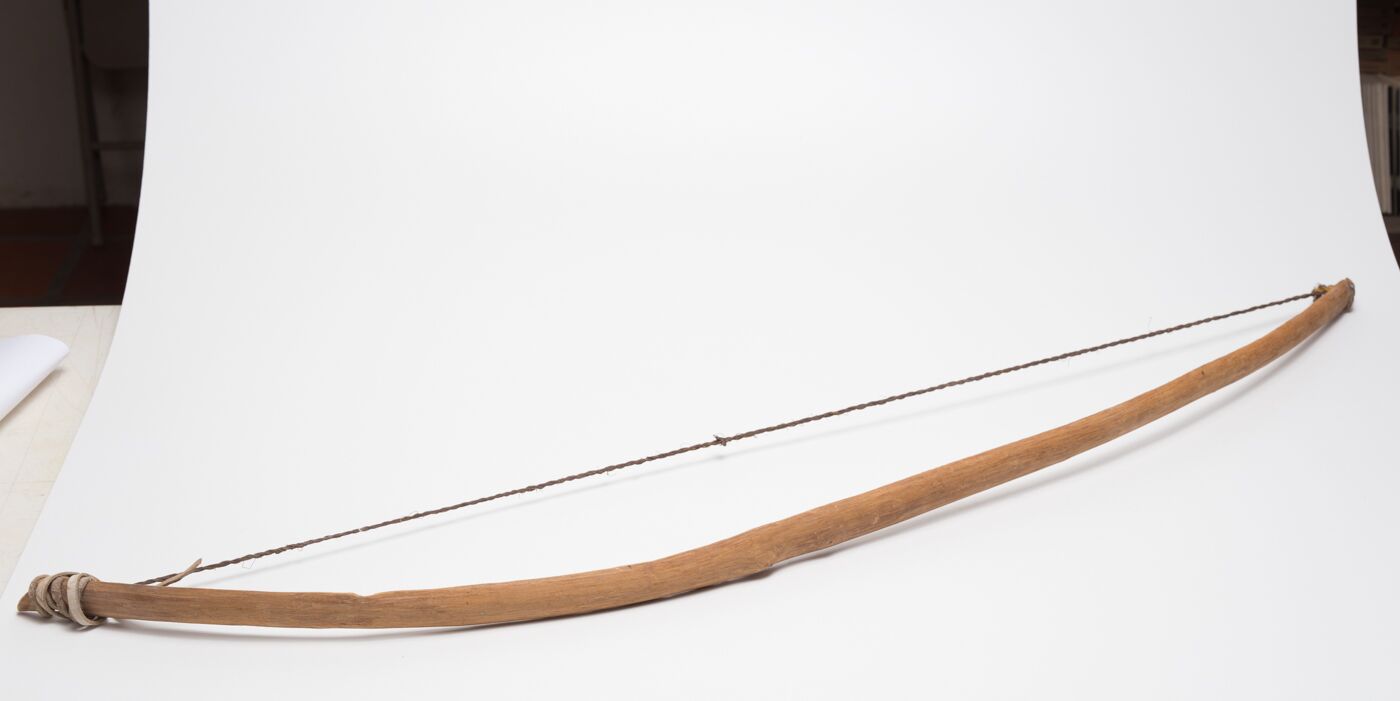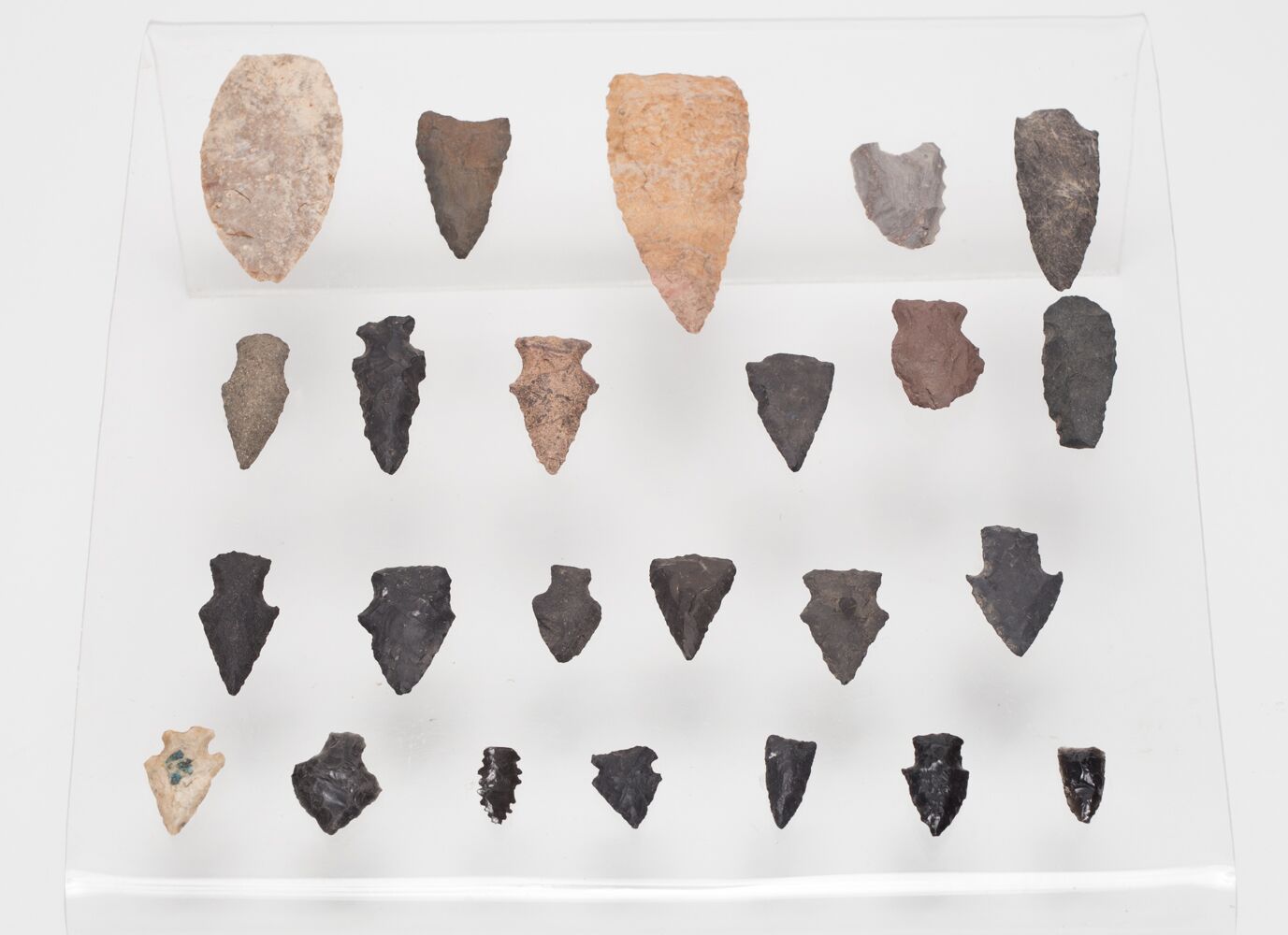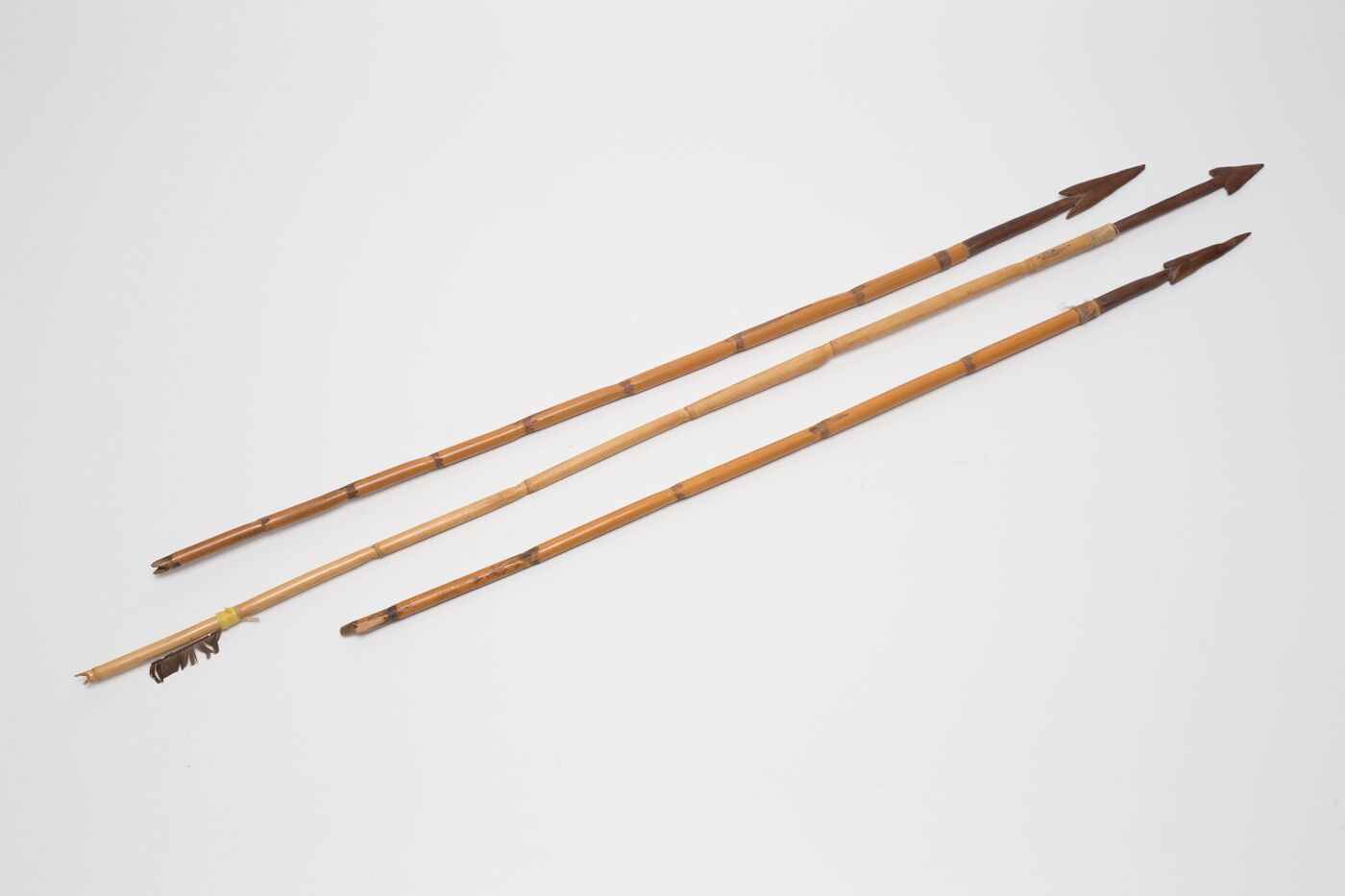-
 ArcoDownload
ArcoDownload
Bow made from the tree called Kungoo, whose flexibility properties allow its manufacture; the string is from the sinew of an animal known as Tatem. In the Yaqui language, the bow has the compound name of Kuta Wiko'i, Wiko'i, which means hunting or war bow. It was used during the Yaqui wars that took place during the Porfiriato. Currently, it is used as a prop and sound emitter in the Coyote dance. Neither the bow nor the reed are considered musical instruments. However, they are sound artifacts, due to the function they perform during the war dance; in it, the arrow is struck against the wood of the warrior's bow, creating a rhythm different from that of the drum. Parallel to the above, the dancers walk with the bow between their legs, like a horse, evoking the glorious past deeds against the invaders. After the dance, the Coyotes are placed in a military position of rest and, taking advantage of the cuts of the reed, they fit it on the bowstring, near the upper end of the bow, which remains supported on the ground, in a vertical position. Thus placed, arch and reed form a cross (Varela, 1986).
Metadata
Title
Bow
Alternative title
Kuta Wiko´i
Creator
Yaqui tribe
Created
1985
Description
Original object (physical):
Dimensions: 125 X 3.8 X 18 cm.
Wood technique
Description
Bow made from the tree called Kungoo, whose flexibility properties allow its manufacture; the string is from the sinew of an animal known as Tatem. In the Yaqui language, the bow has the compound name of Kuta Wiko'i, Wiko'i, which means hunting or war bow. It was used during the Yaqui wars that took place during the Porfiriato. Currently, it is used as a prop and sound emitter in the Coyote dance.
Neither the bow nor the reed are considered musical instruments. However, they are sound artifacts, due to the function they perform during the war dance; in it, the arrow is struck against the wood of the warrior's bow, creating a rhythm different from that of the drum. Parallel to the above, the dancers walk with the bow between their legs, like a horse, evoking the glorious past deeds against the invaders. After the dance, the Coyotes are placed in a military position of rest and, taking advantage of the cuts of the reed, they fit it on the bowstring, near the upper end of the bow, which remains supported on the ground, in a vertical position. Thus placed, arch and reed form a cross (Varela, 1986).
Format
Still image / jpg
Spatial
Sonora , Cócorit
Temporal
1981 -1990
Is part of
Music and dance room, Museum of the Yaqui people
Provenance
Museum of the Yaqui people. Sinaloa and Obregon No. 200, Cocorit, Cajeme, Sonora
It has been part of the museum's collection since its creation in 1985.
Language
eng , yaqui
Date
2021-12-14
Identifier
Web Catalogación Obregón 2016 - 2765
ISC-CGPC-MY-0030
RS-OM-MEY-30
Relationship
Arrows | Coyote dancer | Coyote dancer video | Quiver | Drum | Yaqui flag
References
Varela-Ruiz, Leticia T. (1986). La música en la vida de los yaquis . Sonora: Secretaría de Fomento Educativo y Cultura
Contributor
Sonoran Institute of Culture
Casanova, Juan (photography)
Buitimea Flores, Teodoro; Ruiz Félix, José María (investigation)
Valencia, Carlos ; The Yaqui Pride Project (translation to english)
License

This work is licensed under a Creative Commons Attribution-NonCommercial-ShareAlike 4.0 International License.
Rights
Sonoran Institute of Culture


